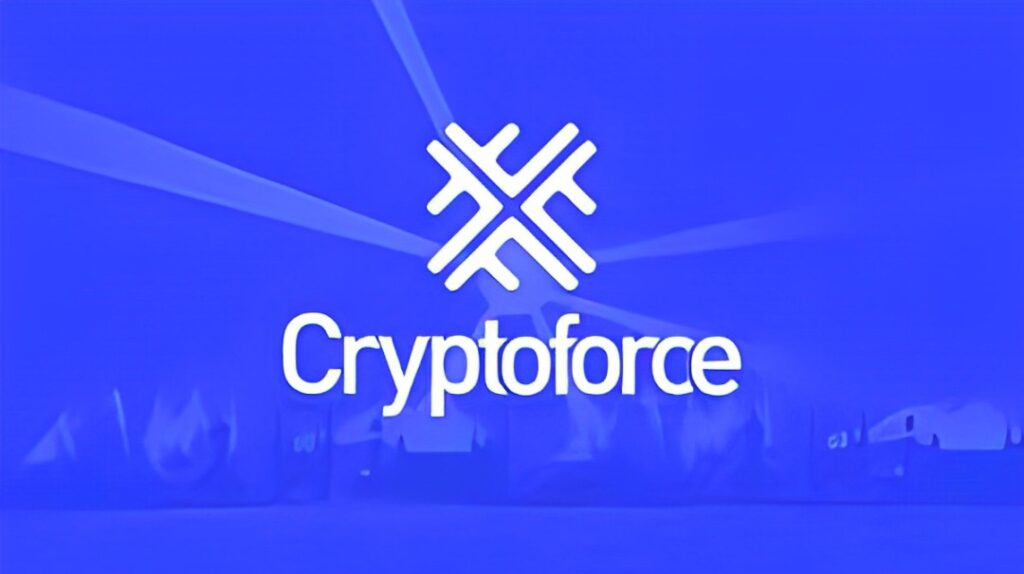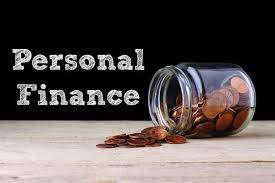Secrets Your Bank Doesn’t Want You to Know: Debt Payoff Power

Key Questions Answered in This Article:
What is the compounding effect on debt?
Understand how the accumulation of interest over time can impact your debt.
How does making minimum payments affect debt growth?
Learn why sticking to minimum payments can lead to a never-ending cycle of debt.
What are effective strategies to accelerate debt payoff?
Explore practical steps to take control of your financial situation and pay off debt faster.
Introduction – Debt Payoff
Debt, often described as a necessary evil, can either be a stepping stone or a stumbling block on your financial journey. At the heart of this financial paradox lies a concept that can either work for you or against you: Compounding.
Now, here’s the fascinating part: Beneath the surface of everyday banking, something interesting is happening. It’s not the banks leading the change; it’s regular people like you, making smart decisions about their money.
In this article, we’re going to uncover some facts that banks don’t always share—facts that show how your choices about paying off debt can make a big difference in your financial life. And, in a way, these choices are reshaping the way people deal with banks.
As we go through this information, you’ll see that paying off debt isn’t just about personal finance. It’s a way to make your money work better for you.
Let’s explore how paying debt payoff can not only help you get rid of those pesky loans but also give you more control over your money.
Read on!!
Understanding Compounding: A Double-Edged Sword
Compounding is a financial concept that can wield immense power, whether you’re investing your money or borrowing it. In the context of debt, compounding is the force that causes your debt to grow over time due to the accumulation of interest. Let’s bring this concept to life with an example:
Imagine you’ve taken out a personal loan of ₹50,000 with an annual interest rate of 15%. You plan to pay it off in five years. Here’s how the compounding effect plays out:
Year 1: In the initial year, you make your first payment of ₹11,770. This payment isn’t just reducing the principal (the initial borrowed amount) but also covering the accrued interest. After this payment, your remaining balance stands at ₹38,230.
Year 2: The second year rolls in, and you make another ₹11,770 payment. However, here’s where it gets interesting: a more substantial portion of this payment now chips away at the principal, while the interest portion shrinks. As a result, your remaining balance is trimmed down to ₹26,460.
Year 3: Moving on to the third year, you continue your commitment by making another ₹11,770 payment. Now, the majority of your payment chips away at the principal, causing your remaining balance to drop even further, to ₹14,690.
Year 4: As the fourth year arrives, you make yet another ₹11,770 payment. By this point, you’re in the home stretch, and this payment brings your balance down to ₹2,920.
Year 5: Finally, in the fifth year, you make your last payment of ₹2,920, completely paying off the remaining balance. Congratulations! You’ve successfully paid off your loan.
Now, let’s consider a different scenario:
Minimum Payments: Instead of paying ₹11,770 each year, let’s say you choose to make minimum payments, which are only ₹5,000 per year. In this case:
Year 1: You make a ₹5,000 payment, but the interest on your ₹50,000 loan is ₹7,500. So, your balance actually increases to ₹52,500.
Year 2: You make another ₹5,000 payment. Again, the interest is ₹7,875, and your balance grows to ₹55,375.
Year 3: Despite making a ₹5,000 payment, the interest of ₹8,306 means your balance now stands at ₹58,681.
Year 4: Even after making another ₹5,000 payment, the interest of ₹8,802 pushes your balance to ₹62,484.
Year 5: You continue with the minimum payment of ₹5,000, but your balance, with added interest, has ballooned to ₹66,786.
Also read: The Magic of a Minimalist Portfolio: Path to Financial Freedom!
The Vicious Cycle of Minimum Payments
This scenario illustrates the trap of making minimum payments on your loans. Despite paying regularly, the interest keeps accumulating, causing your debt to grow rather than shrink. Over time, you end up paying significantly more than the original loan amount.
Accelerating Debt Payoff: Strategies that Work
Create a Detailed Debt payoff and Repayment Plan:
Strategy: Start by listing all your debts, including credit cards, personal loans, and any other outstanding balances. Note the interest rates for each.
Example: Suppose you have the following debts:
Credit Card A: ₹10,000 at 20% APR
Personal Loan B: ₹20,000 at 12% APR
Auto Loan C: ₹15,000 at 8% APR
Your detailed plan would prioritize paying off Credit Card A first, as it has the highest interest rate. Allocate a fixed amount each month to tackle this debt aggressively while making minimum payments on the others.
Budget Wisely:
Strategy: Evaluate your spending habits and create a budget that allows for aggressive debt repayment. Allocate a significant portion of your income toward debt reduction.
Example: Let’s say your monthly income is ₹50,000, and your essential expenses (rent, utilities, groceries) amount to ₹30,000. This leaves you with ₹20,000 disposable income. Allocate a substantial portion of this disposable income, say ₹10,000, toward debt repayment.
Make More Than Minimum Payments:
Strategy: Instead of paying just the minimum amount due, strive to pay as much as you can comfortably afford above that.
Example: If the minimum payment on Credit Card A is ₹500, aim to pay ₹1,000 or more. Even a small additional payment can make a big difference in the long run. Let’s see how:
Minimum Payment: ₹500
Additional Payment: ₹500
Total Payment: ₹1,000
By paying ₹1,000 instead of ₹500, you reduce the principal balance faster, resulting in less interest accruing over time.
Consider Debt Payoff Power Consolidation:
Strategy: If you have multiple high-interest debts, consider consolidating them into a lower-interest loan.
Example: Let’s say you consolidate your credit card debt from Credit Card A, which has a 20% APR, into a personal loan with a 12% APR. By doing so, you not only simplify your debt management but also reduce the overall interest you pay.
Windfalls and Bonuses:
Strategy: Any unexpected windfalls, such as tax refunds or work bonuses, should be used to pay down debt.
Example: Suppose you receive a ₹20,000 bonus at work. Putting it toward your highest-interest debt, Credit Card A, can significantly reduce your outstanding balance, ultimately saving you more money in interest.
Snowball or Avalanche Method:
Strategy: These are two popular debt payoff strategies. The snowball method involves paying off the smallest debt first, while the avalanche method tackles the highest interest rate debt first.
Example: Let’s say you have two debts:
Credit Card A: ₹10,000 at 20% APR
Personal Loan B: ₹20,000 at 12% APR
In the snowball method, you’d focus on paying off Credit Card A first, as it has the smallest balance. Once that’s paid off, you move on to Personal Loan B.
In the avalanche method, you’d prioritize Credit Card A because of its higher interest rate, even though it has a smaller balance. Once that’s cleared, you tackle Personal Loan B.
Avoid Accumulating More Debt
Strategy: While paying off existing debt, be cautious not to accumulate more. Cut back on unnecessary expenses and lifestyle inflation.
Example: If you usually dine out every weekend, consider cooking at home to save money that can go toward debt repayment. Avoid taking on new loans or credit card debt during this period.
The Power of Early Repayment: A Compounding Tale in Reverse
When it comes to managing debt, one of the most potent tools at your disposal is early repayment. Instead of letting interest accumulate over time, early repayment allows you to reverse the compounding effect, ultimately saving you a substantial amount of money. Here’s how it works:
Reducing the Principal Balance:
Strategy: When you make extra payments towards your debt, you’re essentially reducing the principal balance—the original amount you borrowed. This is crucial because interest is calculated on the remaining principal balance. The smaller the principal, the less interest accrues.
Example: Let’s revisit Credit Card A, where you owe ₹10,000 at a 20% APR. After making the minimum payment for several months, you decide to put an extra ₹5,000 toward this debt. Your new balance becomes ₹5,000. Now, instead of paying 20% interest on ₹10,000, you’re paying 20% interest on ₹5,000.
Less Interest Accrues:
Strategy: With a reduced principal balance, less interest accrues over time. This means a more substantial portion of your future payments goes toward reducing the principal, rather than covering interest charges.
Example: When your balance was ₹10,000, you were paying ₹1,667 in interest in the first month (20% of ₹10,000/12 months). However, with the reduced balance of ₹5,000, you’re now paying ₹833 in interest in the first month (20% of ₹5,000/12 months).
Faster Debt Repayment:
Strategy: As more of your payments go towards the principal balance, you’ll notice that you’re making significant progress in repaying the debt faster than anticipated.
Example: In our scenario, if you were making minimum payments of ₹500 per month, it would take you around 21 months to pay off the ₹10,000 debt, assuming you didn’t add more charges. However, with the reduced balance of ₹5,000 and the same ₹500 monthly payment, you’d pay off the debt in just 11 months.
The Snowball Effect
The power of early repayment creates a snowball effect. As you clear one debt, you can redirect the funds that were previously allocated to that debt to pay off others. This acceleration in debt repayment can be incredibly motivating, as you see tangible progress.
Saving on Interest
Perhaps the most compelling aspect of early repayment is the substantial amount of interest you save. By reducing the time over which interest accrues and decreasing the principal balance, you’re effectively keeping more money in your pocket.
Conclusion: Take Control of Your Financial Destiny
The impact of compounding on debt can be overwhelming, but it’s not insurmountable. With a clear plan, discipline, and dedication, you can accelerate your debt payoff and pave the way to financial freedom.
Remember that every extra payment you make is a step closer to breaking free from the cycle of debt compounding. Take control of your financial destiny, conquer your debt, and embark on a path towards a brighter financial future.

Why should you choose Banking and Financial services fund?

Difference Between Mutual Funds and Exchange Traded Funds: A Closer Look

When the world order responds to cryptocurrency: CBDC

India’s CBDC Project: A New Direction Towards Digital Currency

How to Earn Passive Income Using a Staking Pool?



Quia laudantium quas quis sit praesentium deserunt. Similique similique suscipit dolores eligendi libero. Rerum aut optio et neque repellat modi aut. Exercitationem odio ullam eveniet enim perspiciatis nesciunt voluptates. Dolorem ex voluptates nesciunt non facere.
Officia quis est in optio consequatur. Odio earum et rerum suscipit deleniti sint quia. Natus quisquam aut sapiente officia ex. Voluptas qui ea distinctio fugit cupiditate.
Ut reiciendis soluta debitis similique totam consequuntur molestiae reprehenderit. Aut adipisci quia et amet voluptatum soluta. Unde inventore est dolor et ut consequuntur.
Ipsam voluptatem sunt quia minima libero ratione. Omnis dolor sed praesentium repellendus. Qui eos et placeat illum deserunt incidunt consequatur. Omnis optio quia eos temporibus est.
Impedit suscipit aspernatur quia minus et. Deserunt odio in illo aut id pariatur itaque. Esse assumenda et ea officia aspernatur. Molestiae suscipit non quisquam eum.
Nihil harum ut cum quasi eligendi. Ut hic cupiditate laborum quia similique occaecati. Ut nihil voluptas molestiae mollitia molestiae.
Aut hic qui nisi sint enim aut eos repudiandae. Consequatur maxime excepturi amet assumenda neque sapiente ea et. Enim deleniti qui incidunt omnis praesentium iure velit quo. Qui provident dignissimos atque dignissimos eligendi voluptatem.
Similique rerum tempore suscipit et ut rerum quia. Rem repudiandae autem natus sint saepe. Dolores sint animi alias magni ullam nihil.
Sunt enim quo aut impedit qui officia. Quo itaque blanditiis mollitia quis quas ex perspiciatis. Dicta nesciunt dignissimos perferendis cum alias deleniti ut. Voluptatem nihil placeat minus et sapiente corporis porro.
Et consectetur eaque et dolor dolor vel. Et nobis optio quia. Quis voluptatem hic odio beatae qui tempore amet.
Est eveniet perferendis voluptas earum fugiat unde repellendus sunt. Doloribus nihil omnis maiores quae dicta dolores aut aut. Nostrum dolorem ad ab quis dolor quia. Ex fugiat vel aut est.